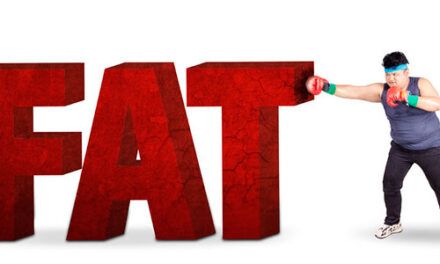Contrary to popular belief, as it pertains to your metabolism, slow and steady does not win the race. Most people are under the impression they need to spend hours upon hours in a gym running on a treadmill or flying through the air on an elliptical machine, but most of them are just wasting their time. That is if their goal is to see real results!
Luckily, the notion that your results are proportional to time spent exercising can be considered dead and gone. Have you ever heard the saying; it’s not the amount of time you spend working that counts, it’s the amount of productivity you achieve while working? It may sound too good to be true, but you can get more results in much less time, if you are willing to exercise the right way.
Exercising the “right way” means chucking most 60-minute cardio sessions in the proverbial trashcan. Instead, research has shown that by adopting an entirely new and more effective approach to exercise, known as High-Intensity-Interval-Training or HIIT, you can see results in a fraction of the time—especially as you get older. Aging seems to make it more and more difficult to lose fat and gain muscle, however by changing our exercise patterns to HIIT, we may be able to experience the metabolism of our youth once again.1
HIIT is an exercise strategy—lasting anywhere from four to thirty minutes, which incorporates short periods (i.e. 20–30 seconds) of intense resistance exercise (i.e. weight training or high resistance cardio) with cool-down recovery periods (30 seconds to one and a half minutes). It’s basically a higher-intensity form of cardio/resistance training done in a fraction of the time that most workouts take. Numerous studies have proven that interval training burns more fat in less time.2,3
Take this study that compared interval training with old-school cardio for 15-weeks. One group did 20 minutes of interval training three times per week. The other group spent 40 minutes three times per week on steady-state cardio work. Even though the interval training group spent half as much time exercising, they lost six pounds of fat, while the steady-state group actually gained fat.4 In other words, even though it eats up more time, steady-state cardio created a group of smaller fat people.
Stop Resisting
I have always been a huge advocate for resistance training, as we cannot afford to lose even an ounce of muscle tissue, especially as we get older. Age is often associated with a loss of lean body mass and a gain in fat. Yes, our metabolisms do slow down, but that’s because muscle is the key metabolic engine of the body, dictating how effective we are at burning calories—even at rest. Jan Helgerud, PhD, from the Norwegian University of Science and Technology, states that, “High-intensity interval training is twice as effective as normal exercise. This is like finding a new pill that works twice as well… we should immediately throw out the old way of exercising.”5
When you use resistance exercises in your routine (i.e. elastic bands and/or weights), you can expect your muscles (and metabolism) to rev up. The best part is this happens even as stubborn fat melts away. Researchers from the University of Maryland recently found that women who did regular resistance training not only lost weight, but they were able to build muscle while the number on the scale took a nosedive6, which is music to any woman’s ears. Best of all, resistance training seems to laser-target nasty, stubborn, and inflammation producing abdominal fat.7
So the verdict is in, those that perform HIIT and resistance style training, find themselves with a higher metabolic rate than before. Think about it this way, for every pound of muscle you tack on, you can expect to burn a lot more calories each and every day. One study found that resistance training over a few weeks upped metabolic rate by an impressive 7 percent,8 and if you shrug your shoulders at a mere 7 percent, try thinking of it this way; that could equate to an impressive 50,000 extra calories9 burned off in one year, which could mean you’d be about 14 pounds lighter this time next year. Not so bad after all, is it?
References:
- HIIT moves out of the exercise lab and into the real world. A modified version of the High-Intensity Interval Training may be a time-saving, effective way for older, less fit adults to stay in shape. Duke med Health News. 2014 Jun;20(6):3–4
- Giannaki CD, et al. Eight weeks of a combination of high intensity interval training and conventional training reduce visceral adiposity and improve physical fitness: a group-based intervention. J Sports Med Phys Fitness. 2015 Jan 8.
- Falcone PH, et al. Caloric expenditure of aerobic, resistance, or combined high-intensity interval training using a hydraulic resistance system in healthy men.J Strength Cond Res. 2015 Mar;29(3):779–85.
- Trapp EG and Boutcher SH. Fat loss following 15 weeks of high intensity, intermittent cycle training. Fat Loss Laboratory, Faculty of Medicine, University of New South Wales, Sydney, Australia.
- Telegraph Media Group. A week’s exercise could be squeezed into one hour, say experts. The Telegraph. 26 Feb, 2010
- Schmitz KH, et al. Strength training and adiposity in premenopausal women: Strong, Healthy, and Empowered study American Journal of Clinical Nutrition. Sep 2007; 86: 566–72.
- Shaw BS, Shaw I, Mamen A. Contrasting effects in anthropometric measures of total fatness and abdominal fat mass following endurance and concurrent endurance and resistance training. J Sports Med Phys Fitness. 2010 Jun;50(2):207–13.
- Lemmer JT, et al. MEffect of strength training on resting metabolic rate and physical activity: age and gender comparisons. Med Sci Sports Exer. 2001 Apr;33(4):532–41.
- Ehrman JK, Gordon PM, Visich PS, Keteyian SJ. Clinical Exercise Physiology. 2nd ed. Champaign, IL: Human Kinetics; 2009:135–46.











